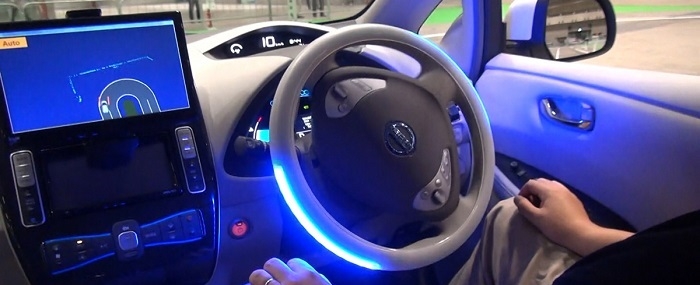Autonomous cars: what happens when we take our foot off the pedal?

Do you remember the world before the internet? If you wanted to find something out, you looked in a book. But first you had to find the book, so you went to the library. But sometimes they didn’t have the book, so you had to ask for it to be transferred or go to another library which held a copy. But before all that you had to know what book to look in…
The internet changed all that. Information is available instantaneously. Couple it with a smartphone and Wi-Fi or 3G and it’s available anywhere.
What has this got to do with autonomous vehicles? Well I think autonomous vehicles will have the same effect on transport that the internet has and is having on our relationship with information, entertainment and many other factors in our lives. Autonomous vehicles have the potential to be a transformative technology in a way nothing the industry has seen before has.
Fundamentally, the cars we drive today are not that far away from the ‘Patent-Motorwagen’ which Frau Benz and her sons took for that first drive in August 1888. We’ve refined and improved the basic template, improving safety, comfort, and fuel efficiency and adding new technologies to make our cars a nice place to spend time, but fundamentally we remain in charge of the machine.
Like the internet and the way we use it, the autonomous vehicle has come about as a number of connected technologies have come into common use. Many cars now have satnav (either integrated or a standalone unit) and cruise control or increasingly adaptive cruise control. Safety technology like lane departure monitors, automatic low-speed braking and traffic sign recognition is increasingly common, as are convenience features like self-parking and night vision. Put these together and you have the basis for the autonomous vehicle. Remove the legal requirement for the driver to be in full control of the vehicle at all times and the autonomous vehicle becomes a reality.
And that’s where the fun begins. An autonomous vehicle can’t exceed the speed limit, or wait in a box junction, or run a red light, or even park illegally. So the millions in revenue made by local and national governments in the form of traffic fines will dry up. An autonomous vehicle could have an ‘efficiency’ programme, using the least fuel for the journey, avoiding hold-ups and congestion, and thus increasing fuel efficiency – great for meeting our CO2 targets, but again reducing revenues from fuel taxes. If you bought a 100% autonomous vehicle with no ‘manual’ mode, why would you need insurance? If the car was involved in an accident it would never be your fault. And you’d never need driving lessons either.
If we allow cars to go autonomous, what about other transport modes? Public transport systems (underground metros, trams and trains) across the world already run on automatic. If cars are autonomous, why not busses? How about trucks and lorries and vans and other delivery vehicles?
And what happens to the traditional car, the car you drive? Perhaps the answer lies in another technology shift: sound reproduction. In my lifetime we have moved from vinyl, via compact and micro cassettes to CDs to downloads. I have a hunch that the download will be the only medium most people use for music but that vinyl will survive because of what it symbolises and its cultural values. Maybe that’s the future for the car: the classics will survive because of what they represent, and the ‘high-tech’ cars around us today will be the obsolete technology of tomorrow.


